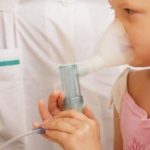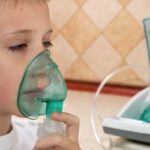How to breathe correctly with an inhaler
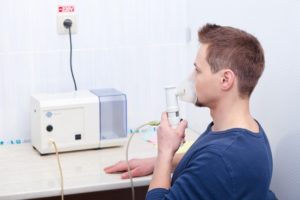 Inhalation is one of the physical procedures that ensures that medicinal substances reach the problem area (nasal and oral mucosa). During the procedure, medications are converted into steam, which facilitates their penetration into the body.
Inhalation is one of the physical procedures that ensures that medicinal substances reach the problem area (nasal and oral mucosa). During the procedure, medications are converted into steam, which facilitates their penetration into the body.
The inhaler helps to achieve the required state of medications, promotes their therapeutic effect on the patient’s body.
Adults perform inhalation with a steam, ultrasonic or compression device. For children, a nebulizer is most suitable. This type of inhaler is capable of converting medicine into an aerosol. At the same time, small particles of substances easily enter the child’s nasopharynx, making it easier for him to breathe.
The use of inhalers requires compliance with certain rules.
The content of the article
Preparation for the procedure
An inhaler, as a medical device, requires preliminary preparation for use.
How to prepare the inhaler and medication for the procedure
Important! For inhalation, you can only use a working device!
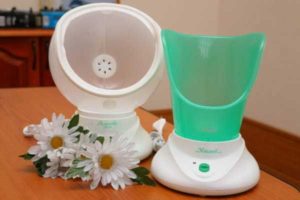 The main requirement for the device is its hygienic condition. To prevent dust particles and harmful microorganisms from entering the nasopharynx, every part of the device (vessel, hose, mouthpiece and especially the mask) must undergo antibacterial treatment.
The main requirement for the device is its hygienic condition. To prevent dust particles and harmful microorganisms from entering the nasopharynx, every part of the device (vessel, hose, mouthpiece and especially the mask) must undergo antibacterial treatment.
All elements must be washed with a disinfectant solution. To do this, you should prepare distilled water in advance. You can also use saline solution.
Important! Boiled water is not the most suitable liquid for preparing inhalers for use. The medicine, when combined with particles contained in boiled water, can form an undesirable impurity for the patient.
Attention should be paid to the preparation of the medicinal product.
Refill substance requirements:
- The vessel is filled with the substance in accordance with the recommendations of doctors and the operating rules of a particular device.
- It is not recommended to refill nebulizers with homemade decoctions, diluted tablets or syrups for oral administration. To achieve a therapeutic effect and not damage the nebulizer, only special solutions are poured into the container.
- All liquids should be poured only warm.
- Alkaline mineral water is allowed to settle before use so that no gas remains in it.
How can a patient prepare for inhalation?
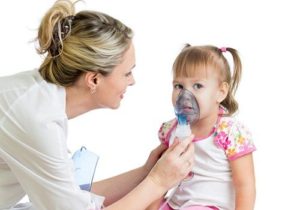 Carrying out the procedure at home has the advantage: the patient can perform it at the most appropriate moment.
Carrying out the procedure at home has the advantage: the patient can perform it at the most appropriate moment.
Recommendations from specialists for preparing a sick person for inhalation:
- Inhalation is carried out in a quiet environment, after measuring temperature and pressure.
- You should eat well 2 hours before inhalation. This will help prevent dizziness.At the same time, do not eat food immediately before using the inhaler.
- Before the session, do not perform physical exercises or expose the body to stress.
- Ventilate the room where the inhalation will take place in advance and allow it to warm up after that. Therapeutic inhalation of warm vapors should be carried out in a warm room.
- During the procedure, wear loose home clothes that do not constrict the chest (T-shirt, robe).
Reference! Between motor (or other physical) activity, as well as eating and inhaling medication through an inhaler, a minimum interval of 2 hours is required.
How to use an inhaler correctly at home
Inhalation at home will not be difficult. Advice from professional doctors will help you achieve maximum therapeutic effect.
Correct body position
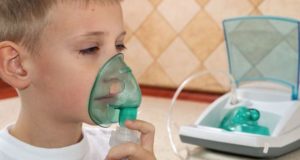 An adult performs inhalation while sitting, resting his elbows on the edge of the table. The back should be kept straight, without much tension. The patient's body should be relaxed enough to allow calm, slow breathing. Thus, with deep breaths, the medicine will enter the body in equal portions.
An adult performs inhalation while sitting, resting his elbows on the edge of the table. The back should be kept straight, without much tension. The patient's body should be relaxed enough to allow calm, slow breathing. Thus, with deep breaths, the medicine will enter the body in equal portions.
For preschool children, primary schoolchildren and adolescents, inhalation is also performed in a sitting position.
An exception is made only for infants. They can not only be held vertically, they can also be placed on the back, on a flat horizontal surface. Pediatricians also see no contraindications to performing the procedure on a sleeping baby.
How to breathe correctly with an inhaler
Breathing Features
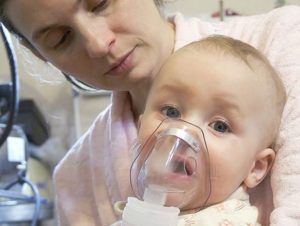 The main human action during the inhalation process is inhaling medicinal vapors. Therefore, a sick person should focus on his breathing.It is important to retain air with medicinal vapors in the oral cavity. Therefore, after a deep breath, you need to hold your breath (1-2 seconds), then proceed to exhale.
The main human action during the inhalation process is inhaling medicinal vapors. Therefore, a sick person should focus on his breathing.It is important to retain air with medicinal vapors in the oral cavity. Therefore, after a deep breath, you need to hold your breath (1-2 seconds), then proceed to exhale.
Mouthpiece and mask: what to choose and how to use
Important! The choice of mask or mouthpiece for inhalation depends on the diagnosis. The mask is used to influence the upper respiratory tract, the mouthpiece helps treat the bronchi and lungs.
The mouthpiece and mask should be brought to the mouth after a long exhalation. The mouthpiece is carefully inserted between the teeth. The lips should clasp it tightly. Thus, when you inhale, drug vapors will enter the body. The inhalation should be slow and drawn out.
During the procedure, you need to try to ensure that the mask fits as tightly as possible to your face.
How to hold a medicine tank
The quality of the procedure is also affected by the position of the container with the medicine. You need to hold it level so that the solution flows evenly.
How long does the procedure take?
The duration of the session depends on the age of the patient:
- Adults - from 15 to 20 minutes.
- Children - from 3 to 5 minutes.
Number of procedures per day
Inhalation can be done several times a day. An adult can have 2 sessions a day. In acute stages or severe forms of the disease, after consultation with a doctor, the number of inhalations can be increased to 4–6 times.
Important! At least 2 hours must pass between treatment sessions using the inhaler.
Completing the procedure
In addition to the rules for preparing and conducting inhalation, it is necessary to ensure a competent exit from the procedure.
How to behave after finishing inhalation
After therapeutic inhalation of warm medicinal vapors, it is important to prolong the effect of medications on the mucous membrane of the nose and oral cavity.To do this, the patient must lie down in a warm room, take cover, and lie quietly for at least 30 minutes.
You cannot immediately go outside, do physical exercise, and you should not eat food immediately after finishing the inhalation.
This behavior after inhalation will allow the patient’s body to rest, recover, and prepare for the next procedures.
How to prepare the device for the following procedures
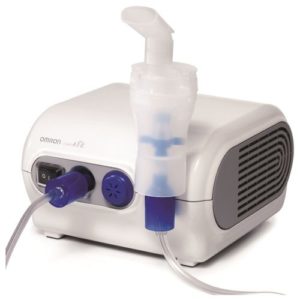 The inhaler should also be given attention after the session is completed. The remaining medicine is poured out, all removable parts are disconnected, each part of the device is thoroughly washed with water, then dried.
The inhaler should also be given attention after the session is completed. The remaining medicine is poured out, all removable parts are disconnected, each part of the device is thoroughly washed with water, then dried.
Important! Do not use detergents to clean the device after inhalation. Particles of the substance remain on the parts, the entry of which into the patient’s body can worsen his condition.
For what symptoms should you not breathe with an inhaler?
When carrying out inhalation, it is necessary to keep the patient's condition under constant control. If there is any deterioration in health, stop the procedure and consult a doctor for advice.
Symptoms for which inhalation is not performed (stopped):
- Increased body temperature (more than 37.5);
- Blood pressure surges, hypertension;
- Atherosclerosis, cardiac or respiratory failure;
- Bleeding (pulmonary, nasal).
Proper use of the inhaler does not require effort, and patient care is guaranteed.

